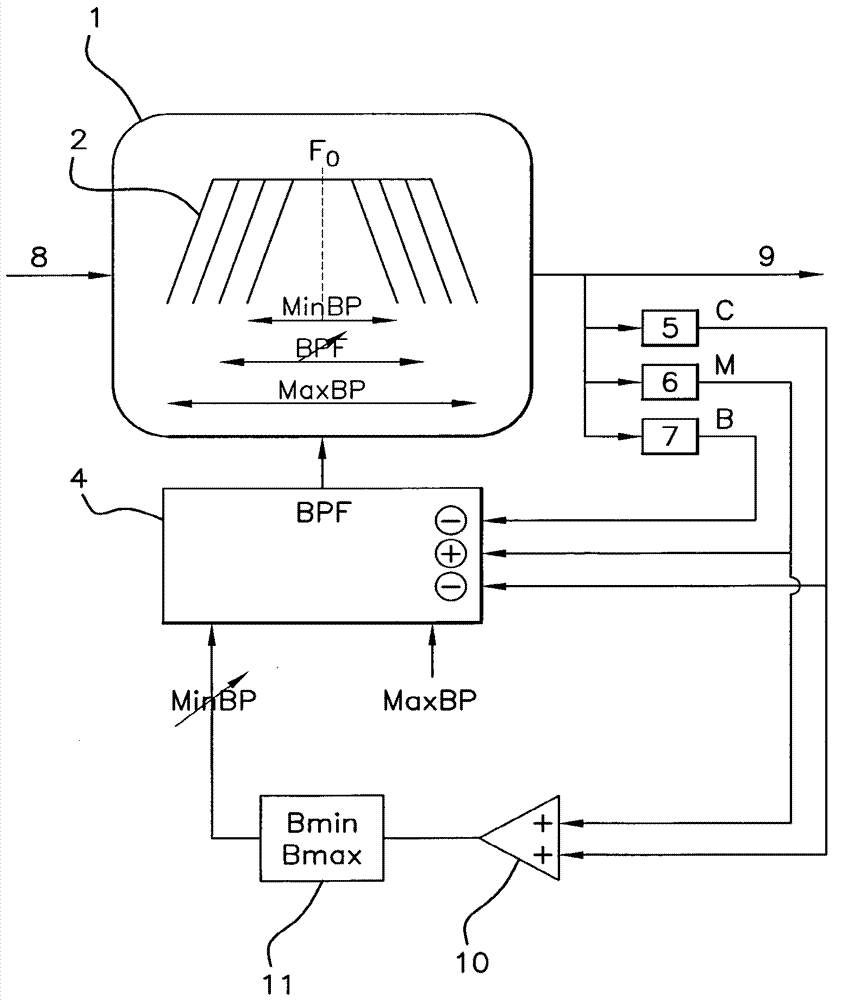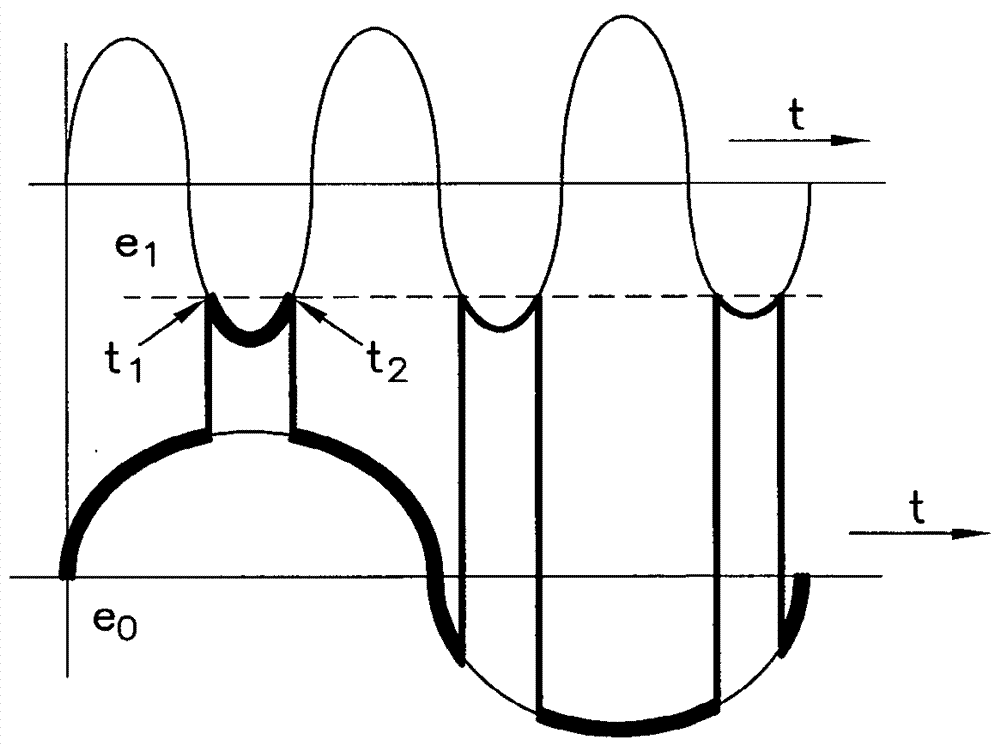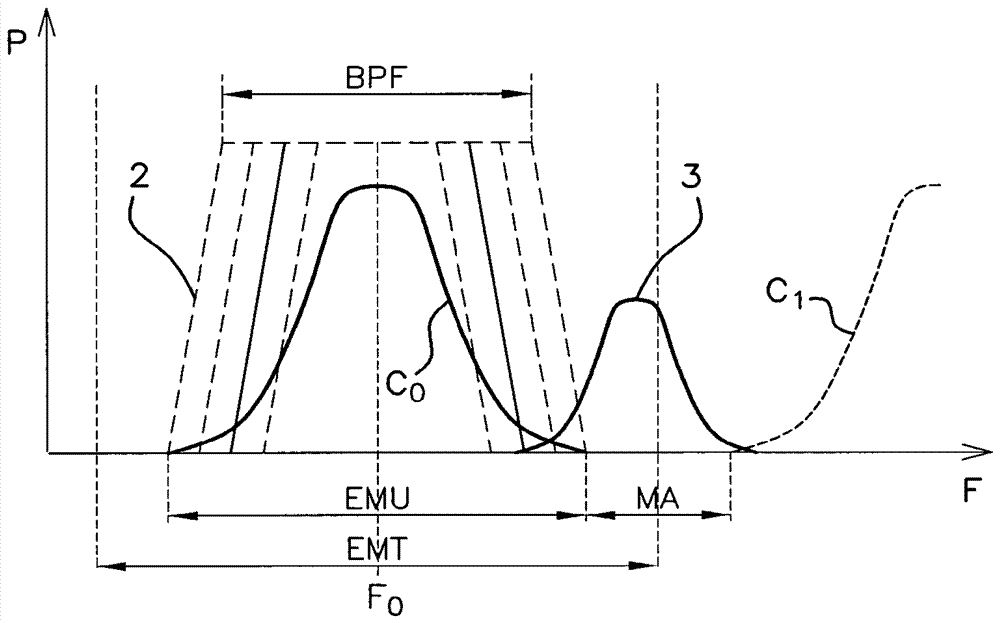Channel selector for a radio frequency receiver
A technology for radio frequency receivers and selectors, applied in the field of selectors, can solve problems such as interruption and damaged audio display
- Summary
- Abstract
- Description
- Claims
- Application Information
AI Technical Summary
Problems solved by technology
Method used
Image
Examples
Embodiment Construction
[0037] Such as Figure 6 shown, with Figure 5 Compared to the channel C of the FM radio frequency receiver according to the present invention 0 The selector 1 includes a bandpass filter 2 or a selection filter 2 .
[0038] The selector 1 receives an initial signal 8 as an input, and the initial signal 8 may be a fundamental frequency signal directly from an antenna or a signal whose frequency has been reduced beforehand, such as an intermediate frequency signal. Selector 1 produces a homologous source according to the band BPF but is reduced in frequency to only channel C 0 (for example, by selecting filter 2 to filter) the signal 9 as output. Signal 9 can be processed by a demodulator.
[0039] The bandpass filter 2 is characterized by the frequency band BPF of the filter, which is based on the channel C to be selected 0 The characteristic center frequency F 0 Centered and has a variable width. According to this variability, usually according to the channel C 0 The c...
PUM
 Login to View More
Login to View More Abstract
Description
Claims
Application Information
 Login to View More
Login to View More - R&D Engineer
- R&D Manager
- IP Professional
- Industry Leading Data Capabilities
- Powerful AI technology
- Patent DNA Extraction
Browse by: Latest US Patents, China's latest patents, Technical Efficacy Thesaurus, Application Domain, Technology Topic, Popular Technical Reports.
© 2024 PatSnap. All rights reserved.Legal|Privacy policy|Modern Slavery Act Transparency Statement|Sitemap|About US| Contact US: help@patsnap.com










